Failure Analysis of ICE Cylinder Units and Technology for Their Elimination
Abstract
1. Introduction
2. Research Technique
2.1. Fractographic Analysis
2.2. Technological Aspects of Applying a Regular Microrelief
2.3. Technology, Its Mathematical Model, and a Tool for Forming a Regular Microrelief
3. Results and Discussion
- -
- Extend the service life and reliability of operation;
- -
- Reduce friction losses;
- -
- Make the mutual movement of surfaces smoother;
- -
- Enhance contact stiffness;
- -
- Extend fatigue life;
- -
- Enhance corrosion resistance.
4. Conclusions
Author Contributions
Funding
Institutional Review Board Statement
Informed Consent Statement
Data Availability Statement
Conflicts of Interest
References
- Fedorchenko, V.I.; Olkhov, V.S.; Panasenko, O.M. Expert research on the establishment disturbances causes of tribounits of internal combustion engines. Theory Pract. Forensic Sci. Crim. 2018, 18, 399–405. [Google Scholar] [CrossRef]
- Liu, Q.; Huang, X.; Shao, X.; Hao, F. Industrial cylinder liner defect detection using a transformer with a block division and mask mechanism. Sci. Rep. 2022, 12, 10689. [Google Scholar] [CrossRef] [PubMed]
- Li, C.; Chen, X.; Liu, H.; Dong, L.; Jian, H.; Wang, J.; Du, F. Tribological Performance and Scuffing Resistance of Cast-Iron Cylinder Liners and Al-Si Alloy Cylinder Liners. Coatings 2023, 13, 1951. [Google Scholar] [CrossRef]
- Mallick, A.; Setti, S.G.; Sahu, R.K. Centrifugally cast functionally graded materials: Fabrication and challenges for probable automotive cylinder liner application. Ceram. Int. 2013, 49, 8649–8682. [Google Scholar] [CrossRef]
- Grabon, W.; Pawlus, P.; Wos, S.; Koszela, W.; Wieczorowski, M. Evolutions of cylinder liner surface texture and tribological performance of piston ring-liner assembly. Tribol. Int. 2018, 127, 545–556. [Google Scholar] [CrossRef]
- Koszela, W.; Pawlus, P.; Reizer, R.; Liskiewicz, T. The combined effect of surface texturing and DLC coating on the functional properties of internal combustion engines. Tribol. Int. 2018, 127, 170–477. [Google Scholar] [CrossRef]
- Zhan, X.; Yi, P.; Liu, Y.; Xiao, P.; Zhu, X.; Ma, J. Effects of single- and multi-shape laser-textured surfaces on tribological properties under dry friction. Proc. Inst. Mech. Eng. Part C J. Mech. Eng. Sci. 2020, 234, 1382–1392. [Google Scholar] [CrossRef]
- Feodosyev, V.I. Strength of Materials: Textbook; Nauka: Moscow, Russia, 1970; 544p. [Google Scholar]
- Rosenberg, A.M.; Rosenberg, O.A. Mechanics of Plastic Deformation in Cutting and Deforming Drawing Processes; Naukova Dumka: Kiev, Ukraine, 1990; 330p. [Google Scholar]
- Isaev, A.N. Mechanical diagram of deformation of a tubular blank in the process of mandrel breaking. Forg. Stamp. Prod. 2001, 4, 6–11. [Google Scholar]
- Shneider, Y.U.G. Service Properties of Parts with Regular Microrelief, 2nd ed.; Revised and Augmented; Mashinostroenie: Leningrad, Russia, 1982; 248p. (In Russian) [Google Scholar]
- Zhao, M.; Li, W.; Wu, Y.; Zhao, X.; Tan, M.; Xing, J. Performance Investigation on Different Designs of Superhydrophobic Surface Texture for Composite Insulator. Materials 2019, 12, 1164. [Google Scholar] [CrossRef] [PubMed]
- GOST 24773-81; Surfaces with Regular Microshape. Classification, Parameters and Characteristics. Izdatelstvo Standartov: Moscow, Russia, 1988.
- Dzyura, V.; Maruschak, P.; Slavov, S.; Dimitrov, D.; Semehen, V.; Markov, O. Evaluating Some Functional Properties of Surfaces with Partially Regular Microreliefs Formed by Ball-Burnishing. Machines 2023, 11, 633. [Google Scholar] [CrossRef]
- Dzyura, V.O.; Lyashuk, O.L. Cylinder-Piston Mechanism of an Internal Combustion Engine. Patent of Ukraine No. 138496 F02B 77/00, Bull. No. 22, 25 November 2019. [Google Scholar]
- Proskuryakov, Y.G. Burnishing of Cylindrical Holes with Greater Interference; Rostov University Publishing House: Rostov-on-Don, Russia, 1982; 166p. [Google Scholar]
- Leshnekova, L.R. Increasing the Productivity of the Process and Improving the Operational Properties of the Surfaces of the Holes by the Method of Surface Plastic Deformation with the Formation of a Regular Microrelief; Cand. of Technical Sciences Dissertation: Saratov, Russia, 2002; 184p. (In Russian) [Google Scholar]
- Slater, R.A.C. Plane Strain Plastic Deformation. In Engineering Plasticity; Palgrave: London, UK, 1977. [Google Scholar] [CrossRef]
- Isaev, A.N. Elastic restoration of hole patterns after mandrel boring of tubular blanks. Bull. DSTU 2004, 4, 437–442. [Google Scholar]
- Khayatzadeh, S.; Rahimi, S.; Blackwell, P. Effect of Plastic Deformation on Elastic and Plastic Recovery in CP Titanium. Key Eng. Mater. 2016, 716, 891–896. [Google Scholar] [CrossRef]
- Lichkovaha, A.S. Improving the Quality of Finishing of Repaired Cylinder Liners of Internal Combustion Engines; Cand. of Technical Sciences Dissertation: Zernograd, Russia, 2007; 215p. (In Russian) [Google Scholar]
- Schneider, Y.G.; Feldman, Y.S.; Lebedinsky, G.G. Vibration rolling of surfaces with a multi-ball tool. Mach. Tools 1973, 7, 36–37. [Google Scholar]
- Schneider, Y.G.; Lebedinsky, G.G.; Ivanov, I.A. Study of the influence of oil absorption of working surfaces of ZIL-130 engine cylinder liners on the dynamics of their wear. Automot. Ind. 1973, 7, 7–8. [Google Scholar]
- Schneider, Y.G.; Lebedinsky, G.G.; Bunga, G.A.; Gutin, M.E. Study of the dependence of cylinder liners wear resistance on the microrelief of the working surface. Automot. Ind. 1970, 2, 41–42. [Google Scholar]
- Guzanová, A.; Brezinová, J.; Bronček, J.; Maruschak, P.; Landová, M. Study of selected properties of coatings devoted to extreme tribo-corrosive conditions. Mater. Sci. Forum. 2015, 818, 32–36. [Google Scholar] [CrossRef]
- Volchok, A.; Halperin, G.; Etsion, I. The effect of surface regular microtopography on fretting fatigue life. Wear 2002, 253, 509–515. [Google Scholar] [CrossRef]
- Shahzad, A.; Haque, U.U.; Lazoglu, I. Effect of the micro-textured piston on the performance of a hermetic reciprocating compressor. Proc. Inst. Mech. Eng. Part J J. Eng. Tribol. 2023, 237, 1107–1118. [Google Scholar] [CrossRef]
- Bai, L.; Sun, J.; Zhang, P.; Khan, Z.A. Friction Behavior of a Textured Surface against Several Materials under Dry and Lubricated Conditions. Materials 2021, 14, 5228. [Google Scholar] [CrossRef] [PubMed]
- Annadi, R.R.; Syed, I. Impact of multi-scaled surface textures on tribological performance of parallel sliding contact under lubricated condition. Tribol. Int. 2023, 183, 108415. [Google Scholar] [CrossRef]
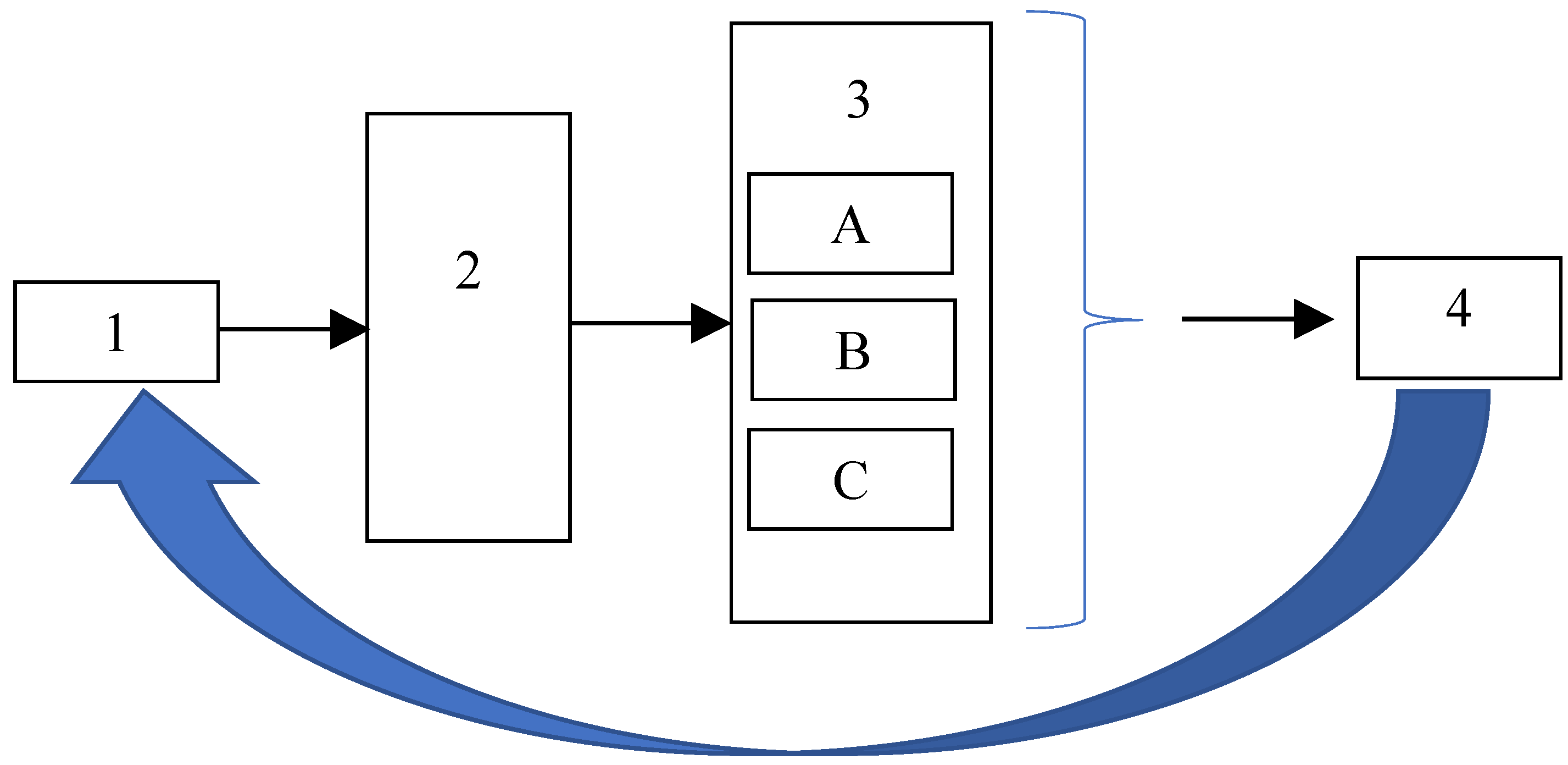
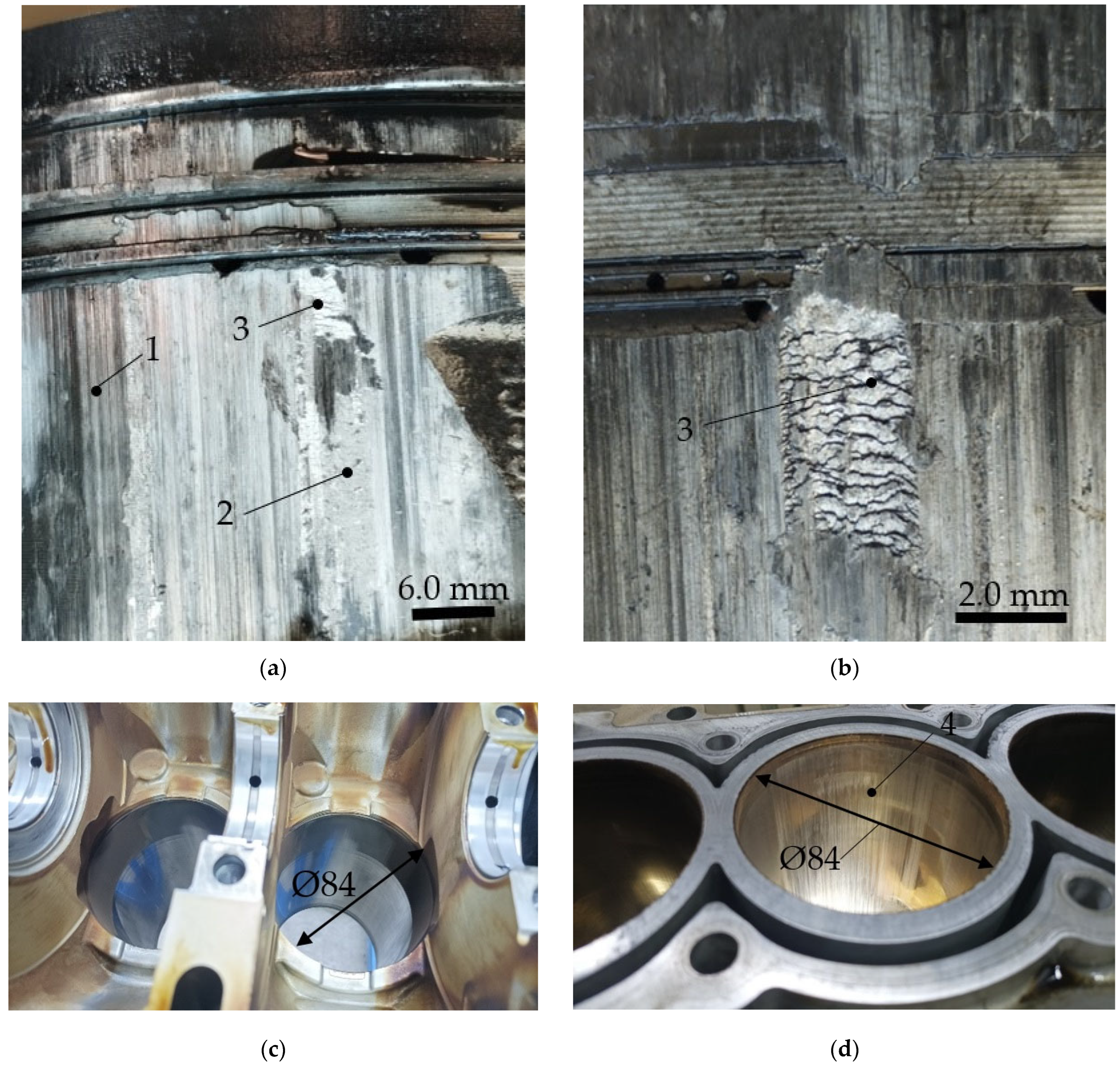
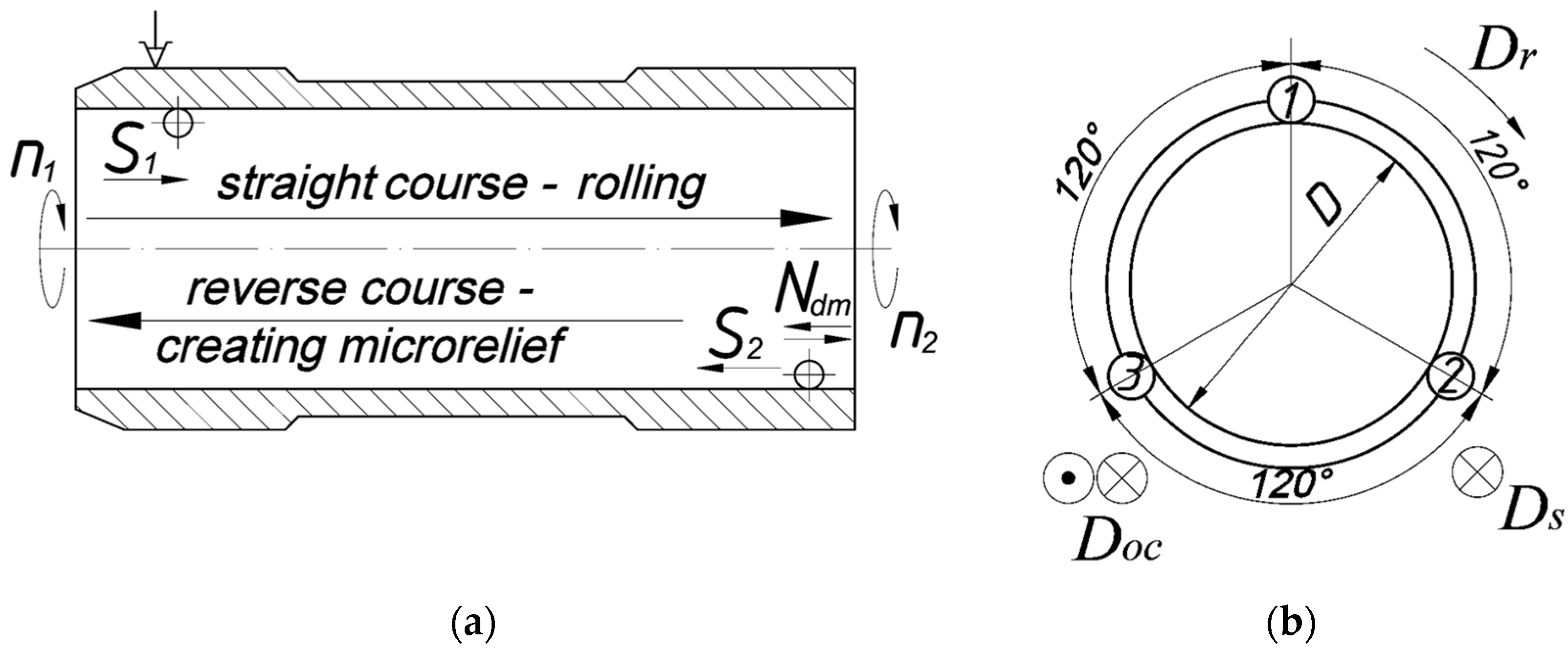
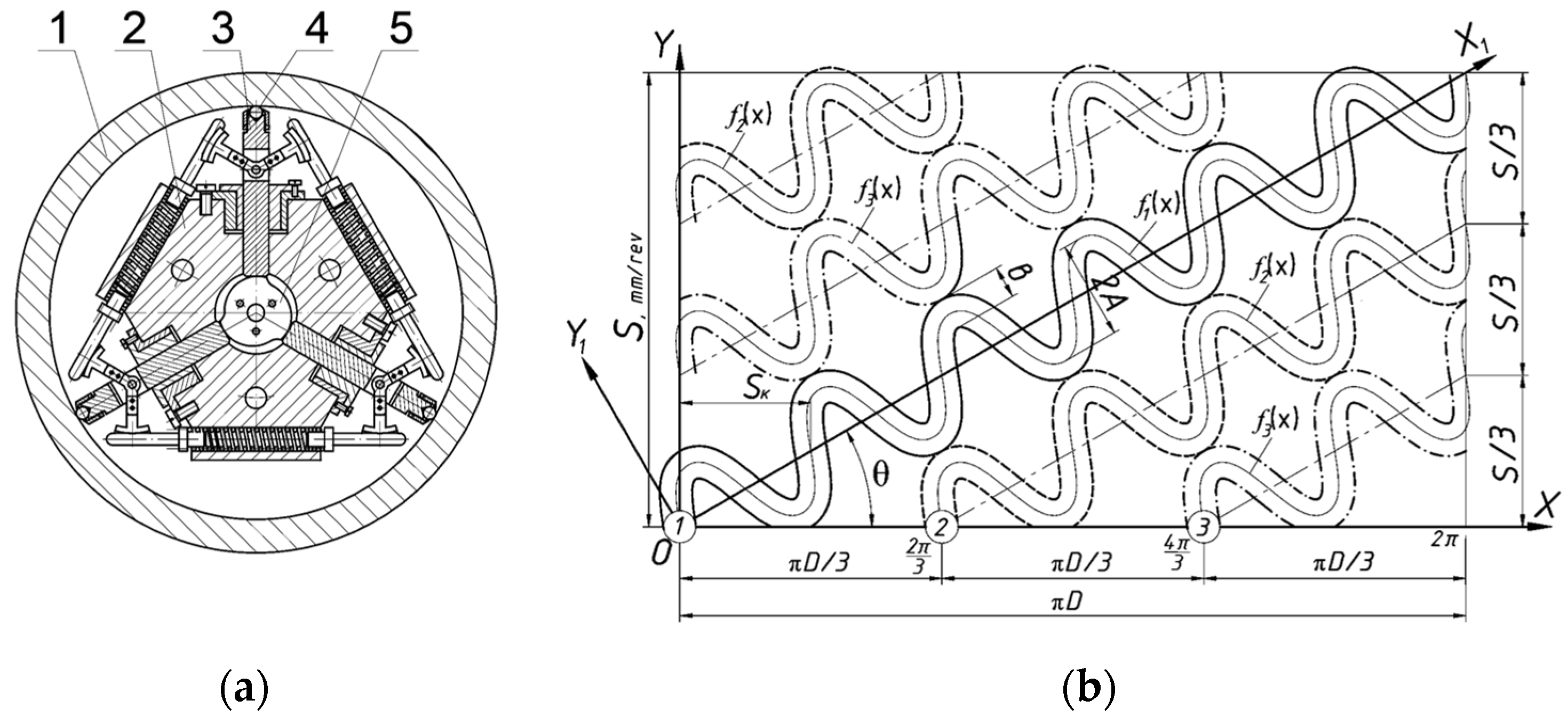
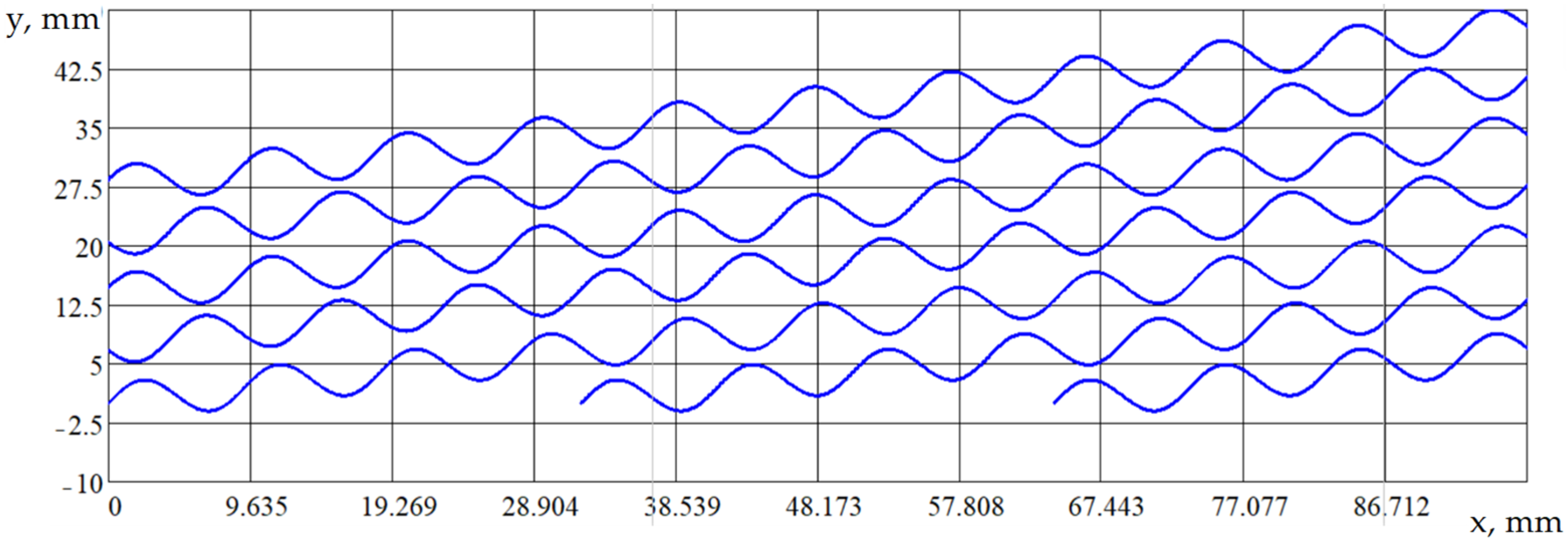
| State of the Working Surface | Defects on the External Surface of the ICE Piston | ||
|---|---|---|---|
| Stains | Scratches | Burrs and Grips | |
| It is a critical state of the part | − | − | + |
| Advantages Provided by Technology | Fine Turning | Honing | Roll Out | Creation of RMP | Turning with Creation of RMP |
|---|---|---|---|---|---|
| Surface roughness, Ra | 1.25…0.63 | 0.63…0.04 | 0.4…0.05 | 1.25…1.00 | 0.63…0.05 |
| Strengthening of the surface | - | - | + | + | + |
| Increase in oil capacity | - | + | - | + | + |
Disclaimer/Publisher’s Note: The statements, opinions and data contained in all publications are solely those of the individual author(s) and contributor(s) and not of MDPI and/or the editor(s). MDPI and/or the editor(s) disclaim responsibility for any injury to people or property resulting from any ideas, methods, instructions or products referred to in the content. |
© 2025 by the authors. Licensee MDPI, Basel, Switzerland. This article is an open access article distributed under the terms and conditions of the Creative Commons Attribution (CC BY) license (https://creativecommons.org/licenses/by/4.0/).
Share and Cite
Dzyura, V.; Maruschak, P.; Bytsa, R.; Komar, R.; Teslia, V.; Menou, A. Failure Analysis of ICE Cylinder Units and Technology for Their Elimination. Eng 2025, 6, 152. https://doi.org/10.3390/eng6070152
Dzyura V, Maruschak P, Bytsa R, Komar R, Teslia V, Menou A. Failure Analysis of ICE Cylinder Units and Technology for Their Elimination. Eng. 2025; 6(7):152. https://doi.org/10.3390/eng6070152
Chicago/Turabian StyleDzyura, Volodymyr, Pavlo Maruschak, Roman Bytsa, Roman Komar, Volodymyr Teslia, and Abdellah Menou. 2025. "Failure Analysis of ICE Cylinder Units and Technology for Their Elimination" Eng 6, no. 7: 152. https://doi.org/10.3390/eng6070152
APA StyleDzyura, V., Maruschak, P., Bytsa, R., Komar, R., Teslia, V., & Menou, A. (2025). Failure Analysis of ICE Cylinder Units and Technology for Their Elimination. Eng, 6(7), 152. https://doi.org/10.3390/eng6070152









